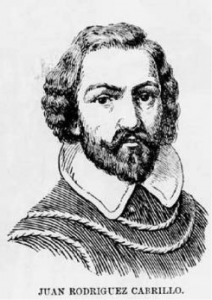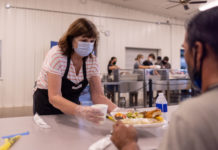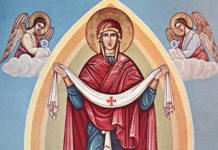There are lots of interesting stories about the early years of discovery in Southern California. Many are not true, but that doesn’t mean the actual truth is completely known.
What appears to be true is that a Spanish explorer — the evidence that he was Portuguese is thin — and former conquistador with Hernán Cortez departed from Navidad, near present day Manzanillo, Guatemala. He was commodore for three ships, and captained the San Salvador, a ship he built himself.
Everyone seems to believe Juan Rodriguez Cabrillo and his men arrived at present day Ballast Point off Point Loma, San Diego on Sept. 28, 1542, about 2 weeks short of the 50th anniversary of Columbus’s first landing in the Bahamas.
He named the area San Miguel and claimed it for the King of Spain. Years later, when whalers were filling their holds with oil from the last of San Diego Bay’s Gray Whales, they would get ballast rocks there, whence it’s name. Ballast Point today is part of a US Navy submarine base, and access is restricted. Although historians generally credit Sebastian Vizcaino’s party in 1602 as celebrating the first Mass there and renaming it San Diego, the Base Chapel has a little monument that states the first Mass was offered by Cabrillo’s group. And indeed, it’s hard to imagine that Mass wouldn’t have been offered in the six days he remained there, since at least one priest was on his ship.


Cabrillo then ventured on further north, and by some accounts tended to base at San Miguel, one of the Channel Islands southwest of Santa Barbara. In an altercation with Indians later, he shattered a tibia which became gangrenous and he died some four months after San Diego. This is where the story gets a little murky.
The Channel Islands
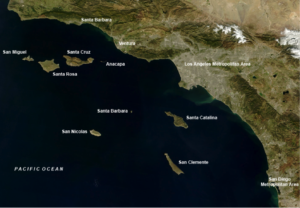

The Visitors Center for Channel Islands National Park is just off the 101 in Ventura. Next door is Island Packers Cruises, which has scheduled trips to five of the islands—Anacapa, Santa Cruz, Santa Rosa, San Miguel, and Santa Barbara. They also offers whale watching excursions. See them at https://www.islandpackers.com/
One of the first things Park Rangers and Island Packers will both tell you is once on the islands, there is no water. Get some before you go, or fill up on the boat, but don’t wander out there without, because you’ll get thirsty.


Towards the end of August son Mike and I explored beautiful Santa Cruz. And what they say about water is true. We didn’t see any fresh water running or standing, but the 10 inches of annual rainfall supports plenty of vegetation. Hundreds of porpoises of several varieties escorted us there and back. It is a delightful 1 hour trip from Ventura to Scorpion Anchorage, the first stop on Santa Cruz where most of the campers got off. Then another half hour on further to Prisoners Harbor. One quarter of Santa Cruz is part of the National Park. The rest is owned by the Nature Conservancy but we were permitted to hike there with a guide provided by Island Packers. From Prisoners Harbor she took a group of us to Pelican Bay where we did a little snorkeling.
At one time thousands of Chumash Indians lived on the Channel Islands and on the adjacent coasts — about 1200 on Santa Cruz alone, in 10 villages. Their numbers were decimated from exposure to the Europeans to a low of 200 at the beginning of the 20th century. Between 2,000 and 5,000 descendants are thought to remain today.
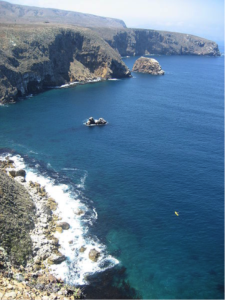

Where is Juan Cabrillo?
Apparently, based on a lone archeologist finding a stone tablet on San Miguel Island, it became popular legend that the explorer was buried there. The archeologist thought he saw initials “JRC” on the tablet. As Jim Watson of the “Catalina Islander” notes in his Aug. 7, 2012 column, “Many historians and archaeologists, however, have called into question the authenticity of the tablet, especially since the phrase “Follow Me on Twitter!” appears beneath the letters.”
Twitter or not, it is known that overall, the ships — and present day tourists — seemed to prefer hanging out around Catalina a good deal more than San Miguel. Catalina was first known as “Capitana” assumedly a reference to Cabrillo, until Vizcaino renamed it Santa Catalina, for Catherine of Alexandria on the saint’s feast day. Catalina has slightly more rainfall than Santa Cruz, although it is about 24 square miles smaller. Though not part of the National Park, it appears that Santa Catalina may have a better claim to the captain’s grave than San Miguel, but no one knows for certain because the ships’ logs have all been lost.
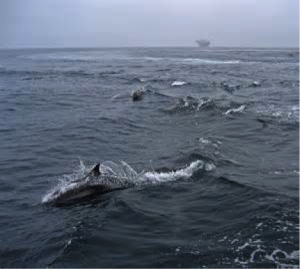

By the mid 1700’s, colonization and conversion of California were of pressing interest as Russian explorers threatened to encroach on Spain’s holdings. Southern California was also considered to receive ships coming from the Philippines, but Monterey Bay further north proved a better location.
San Diego
After Vizcaino in 1602, there were no visitors to southern California until several groups of Spanish explorers in 1769. They came by sea and land. Fr. Junipero Serra arrived after an extremely arduous, overland journey on June 29. July 16, the first of the California missions was founded on Presidio Hill. It was later moved east and across present day Mission Valley to better river access and farmland — and to be away from the soldiers.
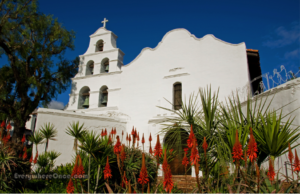

As kids in the 1950s, we used to ride our bikes on the two lane highway that ran through Mission Valley, to the San Diego de Alcala Mission. In those days the Sisters of Nazareth ran an orphanage there. Today it is a school. Once you could go fishing in the nearby river marshes too, but today it’s all taken over by apartments and businesses.
But at least the beautifully restored mission remains for all to see as a memorable complement to Sea World, the San Diego Zoo, or many other entertainments in the area. Weekday Masses are 7 a.m. and 5:30 pm. Saturday vigil is 5:30 p.m., and Sunday Masses begin at 7 a.m. and are every hour including noon, and again at 5:30 p.m.




